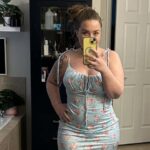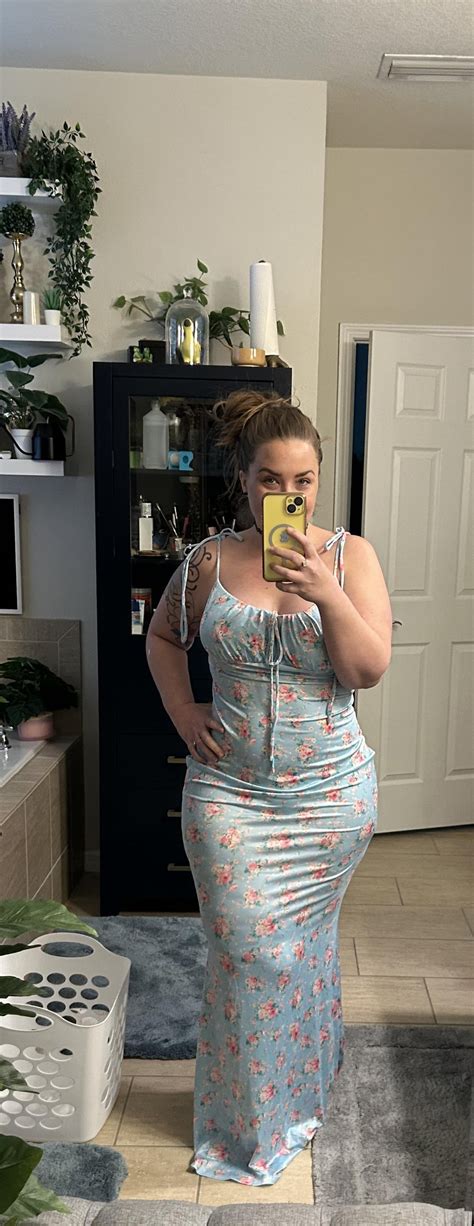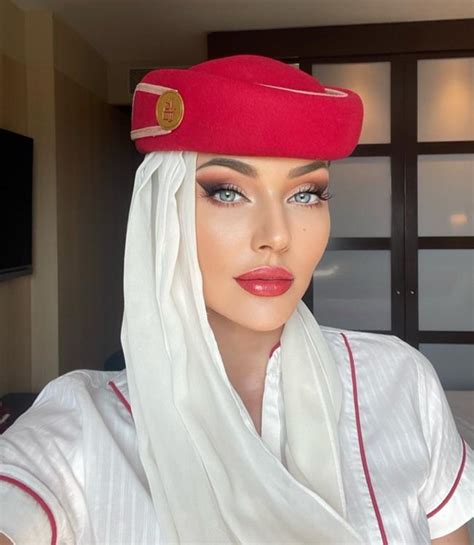
A growing number of mothers are rejecting societal pressures to conform to outdated fashion norms and are instead embracing their natural curves, confidently expressing their personal style regardless of perceived limitations on what moms “should” wear. This movement champions self-acceptance and body positivity, encouraging women to redefine beauty standards and find empowerment through fashion choices that celebrate their postpartum bodies.
Mothers Redefine Fashion Norms, Embracing Curves and Challenging Societal Expectations
In a culture often dictating what mothers “should” and “shouldn’t” wear, a burgeoning movement of women is pushing back against restrictive fashion norms, opting instead to embrace their curves and cultivate personal styles that celebrate their bodies. This shift signals a broader societal change, challenging traditional beauty standards and empowering mothers to prioritize self-acceptance and confidence.
The impetus behind this movement stems from a widespread feeling of being policed and judged based on outdated expectations about how mothers should present themselves. Societal pressures often push women to prioritize looking “put together” and adhering to certain styles that are perceived as more “appropriate” for their role as mothers. However, many women are now rejecting these limitations, choosing to wear clothing that makes them feel comfortable, confident, and authentic, regardless of whether it aligns with conventional expectations.
According to the Yahoo Lifestyle article, the movement isn’t just about fashion; it’s about reclaiming control over one’s body and identity in a society that often overlooks the unique experiences and challenges of motherhood. It is an active decision to prioritize self-love and self-expression, sending a powerful message that mothers deserve to feel beautiful and confident in their own skin, regardless of their size or shape.
Several factors contribute to the rise of this trend. Social media platforms have played a significant role, providing a space for mothers to connect, share their experiences, and find inspiration from other women who are embracing their curves. Influencers and bloggers who promote body positivity and inclusive fashion have also helped to normalize diverse body types and challenge the unrealistic beauty standards that are often perpetuated by mainstream media.
The movement also reflects a growing awareness of the importance of self-care and mental well-being for mothers. By prioritizing their own needs and desires, women are finding that they are better able to cope with the demands of motherhood and maintain a healthy sense of self. Embracing personal style becomes an act of self-care, a way to express one’s individuality and boost confidence in a world where mothers often feel invisible or undervalued.
“I’m embracing and enhancing my curves in a culture where they say moms shouldn’t wear that,” captures the sentiment driving this shift. It’s about actively challenging pre-conceived notions, rejecting the notion that motherhood requires sacrificing personal style or conforming to limiting expectations. The sentiment underscores a desire to redefine what it means to be a stylish and confident mother in contemporary society.
This movement also benefits the younger generation. By demonstrating self-acceptance and body positivity, mothers are setting a positive example for their children, teaching them to value themselves for who they are, regardless of their physical appearance. This can have a profound impact on children’s self-esteem and body image, helping them to develop a healthy relationship with their bodies from a young age.
Moreover, the growing emphasis on inclusivity in the fashion industry is also contributing to this trend. Brands are increasingly recognizing the need to cater to a wider range of body types and offer clothing that is both stylish and comfortable for women of all sizes. This shift is making it easier for mothers to find clothing that fits well, flatters their figures, and allows them to express their personal style.
The movement has faced some criticism, with some arguing that it promotes unhealthy lifestyles or glorifies obesity. However, proponents of the trend emphasize that it is not about encouraging unhealthy habits, but rather about promoting self-acceptance and celebrating the diversity of the female body. They argue that all bodies are worthy of love and respect, regardless of their size or shape, and that mothers should not feel pressured to conform to unrealistic beauty standards.
This shift in attitudes towards motherhood and fashion is not just a fleeting trend, but rather a reflection of a deeper cultural change. As women continue to challenge traditional norms and embrace their individuality, the definition of beauty is evolving to become more inclusive and representative of the diverse realities of motherhood. This ultimately fosters a more supportive and empowering environment for all women.
The movement also highlights the importance of challenging the often-unrealistic expectations placed on mothers to “bounce back” after childbirth. The pressure to regain their pre-pregnancy bodies can be incredibly stressful and damaging to women’s self-esteem. By embracing their curves and prioritizing their own well-being, mothers are rejecting this pressure and choosing to focus on what truly matters: their health, happiness, and the well-being of their families.
Furthermore, embracing one’s personal style allows mothers to rediscover a sense of self that may have been lost amidst the demands of parenthood. By taking the time to experiment with different looks and find clothing that makes them feel good, women can reconnect with their passions and interests and reclaim their individuality.
Ultimately, the movement of mothers embracing their curves and owning their style represents a powerful act of self-love, self-expression, and defiance against societal pressures. It is a testament to the resilience and strength of women and a celebration of the beauty and diversity of the female body. This ongoing revolution will reshape the way motherhood and beauty standards are perceived for generations to come.
Specific Examples and Insights
While the Yahoo Lifestyle article doesn’t delve into specific brands or influencers by name, the general trend highlights the rise of:
- Body-Positive Influencers: These are social media personalities who actively promote self-acceptance, showcase diverse body types, and offer styling advice for women of all shapes and sizes. They often collaborate with brands that align with their values and champion inclusive fashion.
- Inclusive Fashion Brands: Numerous clothing companies are now prioritizing extended size ranges, diverse model representation, and designs that cater to a variety of body types. They recognize the buying power of the plus-size market and are actively working to meet the needs of these consumers.
- Online Communities: Online forums, social media groups, and online communities dedicated to body positivity and motherhood have become invaluable resources for women seeking support, inspiration, and advice. These platforms offer a safe space to share experiences, ask questions, and connect with others who understand the challenges and triumphs of embracing one’s curves.
- “Mom Style” Redefined: The traditional notion of “mom style” – often associated with comfortable but unflattering clothing – is being redefined. Mothers are demonstrating that it is possible to be stylish, confident, and comfortable while embracing their curves. They are incorporating trendy pieces, experimenting with different silhouettes, and finding ways to express their individuality through fashion.
- Focus on Comfort and Functionality: While style is important, comfort and functionality are also key considerations for mothers. Many women are seeking out clothing that is easy to move in, comfortable to wear for extended periods, and practical for everyday activities, such as playing with children or running errands.
- Rejection of Diet Culture: This movement is often linked to a broader rejection of diet culture and the pressure to conform to unrealistic beauty standards. Mothers are prioritizing their health and well-being over achieving a certain size or shape, and they are teaching their children to do the same.
- Embracing Postpartum Bodies: The focus is shifting from “bouncing back” to accepting and celebrating the changes that occur in a woman’s body after childbirth. Mothers are recognizing that their bodies have done something amazing, and they are embracing their curves as a symbol of strength and resilience.
Impact on the Fashion Industry
The rise of this movement has had a significant impact on the fashion industry. Brands are increasingly recognizing the need to cater to a wider range of body types and offer clothing that is both stylish and comfortable for women of all sizes. This shift is not only beneficial for consumers but also makes good business sense. The plus-size market is a growing force, and brands that ignore it are missing out on a significant opportunity.
Furthermore, the demand for inclusive fashion has led to a greater emphasis on diversity in advertising and marketing campaigns. Brands are now featuring models of all shapes, sizes, and ethnicities in their campaigns, reflecting the diverse realities of the consumer base. This is a positive step towards normalizing diverse body types and challenging the unrealistic beauty standards that are often perpetuated by the media.
Challenges and Considerations
Despite the progress that has been made, there are still challenges and considerations to be addressed. One challenge is the lack of representation of diverse body types in the fashion industry. While some brands are making an effort to be more inclusive, there is still a long way to go. Many plus-size models are still white and able-bodied, and there is a need for greater representation of women of color, women with disabilities, and women of different ages.
Another challenge is the prevalence of fat-shaming and body-shaming in society. Despite the growing awareness of the importance of body positivity, many people still hold negative attitudes towards larger bodies. This can make it difficult for mothers to embrace their curves and feel confident in their own skin.
Finally, it is important to recognize that body positivity is not about promoting unhealthy lifestyles. It is about accepting and celebrating the diversity of the female body, regardless of size or shape. It is important for mothers to prioritize their health and well-being, but they should not feel pressured to conform to unrealistic beauty standards.
Quotes and Attribution
“I’m embracing and enhancing my curves in a culture where they say moms shouldn’t wear that,” (Yahoo Lifestyle).
The Future of Motherhood and Fashion
The movement of mothers embracing their curves and owning their style is poised to continue to grow and evolve in the years to come. As women continue to challenge traditional norms and embrace their individuality, the definition of beauty will continue to become more inclusive and representative of the diverse realities of motherhood. This will ultimately foster a more supportive and empowering environment for all women.
The fashion industry will also continue to adapt to the changing needs and desires of consumers. Brands will increasingly prioritize inclusive sizing, diverse model representation, and designs that cater to a variety of body types. This will make it easier for mothers to find clothing that fits well, flatters their figures, and allows them to express their personal style.
Ultimately, the future of motherhood and fashion is one of inclusivity, self-acceptance, and empowerment. Mothers will no longer feel pressured to conform to unrealistic beauty standards, but rather will be encouraged to embrace their curves and celebrate their individuality. This will lead to a more positive and healthy relationship with their bodies and a greater sense of self-confidence and well-being.
Frequently Asked Questions (FAQ)
1. What exactly does it mean for mothers to “embrace their curves?”
Embracing curves means rejecting societal pressure to conform to a specific body type, especially after childbirth. It involves accepting and celebrating the natural changes that occur in a woman’s body during and after pregnancy, such as weight gain, stretch marks, and changes in body shape. This embrace encourages mothers to prioritize self-love, self-acceptance, and body positivity, focusing on their health and well-being rather than striving for an unrealistic ideal of the “perfect” body. It also means choosing clothing and styles that flatter their figures and make them feel confident and comfortable, regardless of societal expectations.
2. Why is there so much pressure on mothers to look a certain way after having children?
The pressure on mothers to look a certain way after childbirth stems from a combination of factors, including unrealistic beauty standards perpetuated by media and advertising, societal expectations about women’s roles and appearance, and a lack of understanding about the physical and emotional changes that occur during and after pregnancy. The “bounce back” culture, which emphasizes regaining pre-pregnancy bodies as quickly as possible, contributes to this pressure and can lead to feelings of inadequacy and self-doubt among mothers. This pressure often ignores the fact that every woman’s body is different, and that it takes time and effort to recover from childbirth.
3. How can mothers combat negative body image and build self-confidence?
Mothers can combat negative body image and build self-confidence through a variety of strategies:
- Practice Self-Compassion: Treat yourself with the same kindness and understanding that you would offer to a friend. Acknowledge that your body has gone through a significant transformation and that it takes time to adjust.
- Challenge Negative Thoughts: Identify and challenge negative thoughts about your body. Replace them with positive affirmations and focus on your strengths and qualities.
- Focus on Health and Well-being: Prioritize your physical and mental health. Engage in activities that make you feel good, such as exercise, healthy eating, and spending time with loved ones.
- Seek Support: Connect with other mothers who understand your experiences. Join online or in-person support groups where you can share your feelings and receive encouragement.
- Unfollow Unrealistic Accounts: Curate your social media feed to include accounts that promote body positivity and realistic portrayals of motherhood. Unfollow accounts that make you feel inadequate or self-conscious.
- Celebrate Your Body: Appreciate your body for what it can do. Focus on its strength, resilience, and ability to nurture and care for your children.
- Dress for Comfort and Confidence: Choose clothing that fits well, flatters your figure, and makes you feel good. Experiment with different styles and find what works best for you.
- Practice Gratitude: Take time each day to appreciate the things you are grateful for in your life, including your body.
- Seek Professional Help: If you are struggling with severe body image issues or disordered eating, seek professional help from a therapist or counselor.
4. What role does social media play in this movement?
Social media plays a significant role in the movement of mothers embracing their curves. It provides a platform for women to connect, share their experiences, and find inspiration from others who are embracing their bodies. Body-positive influencers and bloggers use social media to promote self-acceptance, showcase diverse body types, and offer styling advice. Online communities and support groups offer a safe space for mothers to share their feelings, ask questions, and connect with others who understand the challenges and triumphs of embracing their curves. However, it is important to be mindful of the potential for social media to contribute to negative body image and to curate your feed to include accounts that promote positivity and realism.
5. How can fashion brands contribute to a more inclusive and body-positive environment for mothers?
Fashion brands can contribute to a more inclusive and body-positive environment for mothers in several ways:
- Expand Size Ranges: Offer clothing in a wider range of sizes to cater to women of all shapes and sizes.
- Use Diverse Models: Feature models of all shapes, sizes, ethnicities, and ages in advertising and marketing campaigns.
- Avoid Retouching: Refrain from heavily retouching photos of models to present more realistic portrayals of the female body.
- Offer Inclusive Designs: Design clothing that is flattering and comfortable for a variety of body types.
- Listen to Customer Feedback: Pay attention to customer feedback and use it to improve products and services.
- Partner with Body-Positive Influencers: Collaborate with body-positive influencers to promote inclusive fashion and body acceptance.
- Promote Body Positivity: Use their platforms to promote body positivity and challenge unrealistic beauty standards.
- Educate Employees: Train employees on body positivity and inclusivity to ensure that all customers are treated with respect and dignity.
- Invest in Research: Conduct research to better understand the needs and desires of plus-size consumers.
- Be Transparent: Be transparent about their manufacturing processes and ethical sourcing practices.
By taking these steps, fashion brands can help to create a more inclusive and body-positive environment for mothers and all women.









